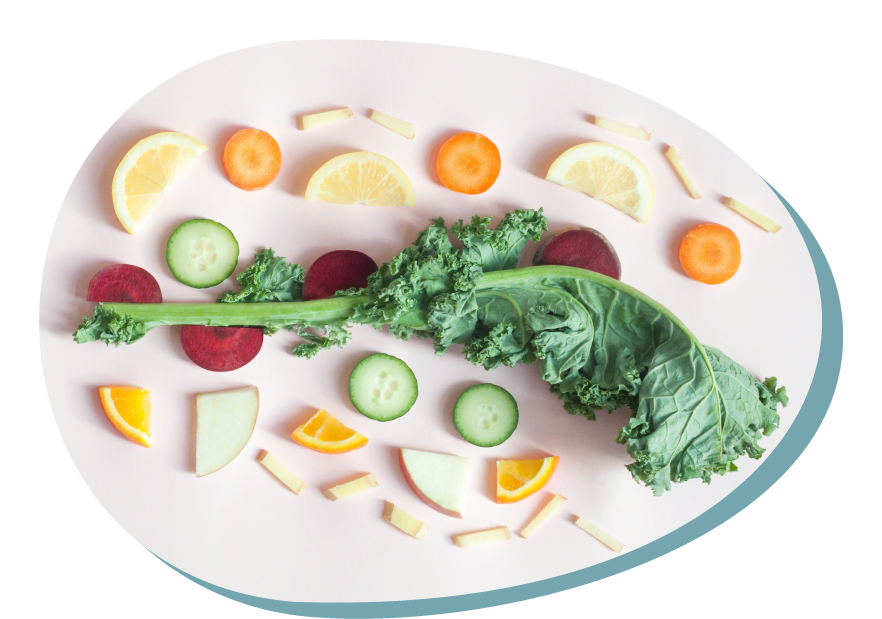We are what we eat
Type of resource: website
Language: EN
Description
Observe that certain foods have an anatomical shape similar to the organs of our body and not surprisingly, are beneficial especially for them.
Scientific concept introduced
Collaborative learning, classification, health, functions, body, apparatus, organs, nutrition and diet, hypothesis, similarity.
Creative and critical thinking
Critical thinking:
– Analysis
– Observation
– Comparison
– Drawing conclusions
– Evaluation
Creative thinking:
– Curiosity
– Ability to find alternatives
– Original ideas
Mathematical reasoning
Measuring
Scientific thinking
– Observing
– Asking questions
– Formulating hypotheses
– Analysing data
– Coming to conclusions
– Developing logical thinking
– Identifying phenomena, similarities and differences
Learning how to learn
– Collaborating in a group
– Listening and following instructions
– Identifying links and relationships
Additional
– Knowing how to work in a group
– Making joint decisions
– Drawing, representing
– Exchanging information
– Using the computer to find materials
– Sharing opinions
– Knowing, observing and respecting rules and participating in the construction of rules
– Collaborating in a group and respecting everyone’s time
We are what we eat
Overall aims
– understand and use specific language
– knowing how to communicate
– identifying links and relationships
– observe, detect facts, phenomena and measure data
– observe and pay attention to the functioning of your body
– organisational skills
– to reflect on the connection between the two worlds with the aim of leading them to reflect on the general objectives of the project, in order to generalise learning (authentic task)
– identify strengths/weaknesses
– designing work effectively
– promote good self-esteem and self-efficacy
– knowing how to manage time and given information
– knowing how to work in small co-operative groups, through the methodology of co-operative learning
– fostering positive interdependence
Vocabulary – keywords should be understood
organs, fruit, vegetables, science, food, nutrition, health, similarity, body, group work
Expected learning outcomes (operational aims)
the child/student will be able to:
– To know the main organs of the human body and to find correspondence between them and foods from the plant world.
– Knowing the foods of the plant world and being able to identify sowing-harvesting times
– Associating foods with the specific functions of the organs they resemble
the child/student will have developed the ability to:
– Listening and following instructions
– Working together as a team
– Scientific observation
STEM skills – to which the learning unit is related to
CORE STEM SKILLS
Asking questions
Observing and forecasting
Making assumptions
Drawing conclusions based on observation
Classify
Analysing the results
ADDITIONAL SKILLS
– Knowing how to cooperate
– Being creative and critical in thinking
– Representing
– Coordination
Teaching methodologies/activity outline
Introductory lessons are provided on the topics of the disciplines covered, filling in any gaps.
1. Brainstorming of prior knowledge in relation to the classification of higher plants, seed and fruit, and the human body
2. Make people reflect on the reason for brainstorming by linking the two worlds, by asking stimulating questions.
3. Using the interactive whiteboard, the teacher proposes an educational sheet and invites the pupils to associate the various organs of the body with the corresponding types of fruit and vegetables.
4. The teacher divides the pupils into small groups and provides them with sheets of paper and colours to represent what they have been able to grasp from the previous activity.
5. Each group leader presents the results of their work to the class, and any corrections are made with the support of the teacher.
6. Draw up a vademecum to raise awareness of proper dietary education and propose it to parents.
7. At the end of the proposed activity, a jigsaw puzzle will be made using the fruit, brought from home, and simulating a real human body in 3D (the material used will then be taken home to be eaten, to develop in them the awareness that food is a common good and nothing should be wasted).
Conclusions:
At the end of this teaching proposal it will be important to see how the teacher’s objectives correspond to the pupils’ new learning through the multidisciplinary approach. The pupils will acquire a new awareness of the consumption of healthy food in their diet, contributing to the good functioning of their bodies.
Assessment of learning
– Student learning by means of structured tests, reality tasks (fact sheet);
– Verification of each child’s exploratory behaviour during all meetings, as well as curiosity about what is new
– Self-assessment
– Peer review
Equipment and materials to be used in learning unit (tools, ingredients etc)
Fruit
Sheets
Colours
Kind of setting
Class and multimedia classroom
References – source
Photo by Dose Juice on Unsplash
We are what we eat
1. Usefulness for STEM education – integrating content of different disciplines
Cross-curricular character of the resource

The range of S-T-E-M subjects included

The presentation of possibilities of including artistic activities (STEAM approach)

2. Expected learning outcomes
Consistency (links) with preschool core curriculum

Communicativeness of description

3. Methodology of teaching
Clarity, communicativeness of instructions for teachers

Meaningful learning – using practical life problems

Original idea

The level of ease in implementing the methodology to preschool age children

The level of ease in preparing necessary ingredients, materials and equipment needed

4. Sustainability
Ecological characteristics of materials/ results

Supporting healthy eating habits

Low ecological footprint

Possibilities of inclusion (respecting cultural diversity and food intolerances)

5. Class management
Using differentiated forms of work – individual, team work etc.

Individual work

Team work

Whole group
6. Time management

Short activity (10-15 minutes)

Medium activity (20-30 minutes)

Long activity (1 hour or more)

Very long activity (1 day or more)
PDF: https://www.printfriendly.com/p/g/fTa9js

